Auto parts float against a lovely blue background at Chicago’s Ninevah Auto Parts. Back to the Automotive Art Gallery index
Continue reading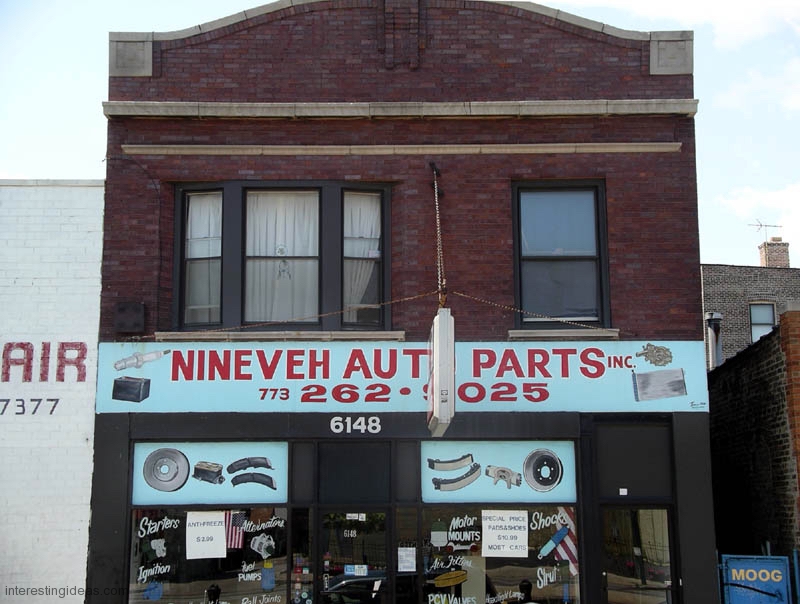

Auto parts float against a lovely blue background at Chicago’s Ninevah Auto Parts. Back to the Automotive Art Gallery index
Continue reading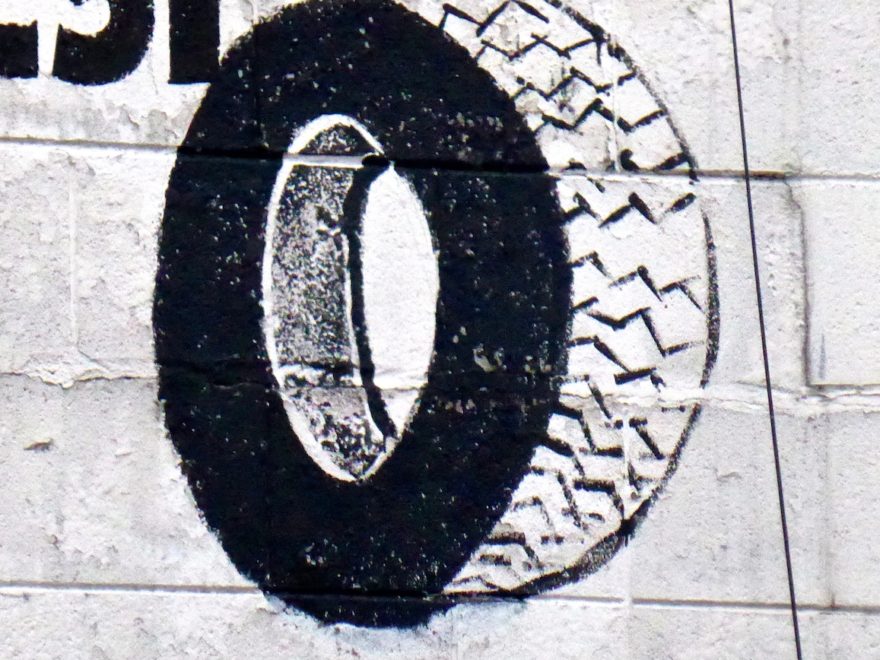
Like mufflers, tires have a special place in the universe of automotive signage. Painted tire art can be found in many locations, and actual tires, like actual mufflers, can serve very effectively to advertise a service. Personally, I love the simple tire-on-a-stick, though there is still much to like in every artist’s painted rendition of this ubiquitous form. Back to the Automotive Art Gallery index
Continue reading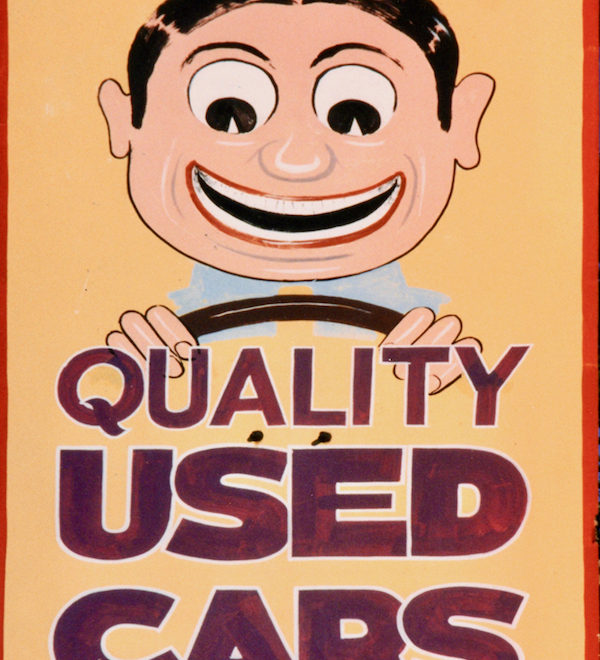
Here’s a look back at a spectacular automotive art environment that once graced Chicago’s greatest decorated street. Regency Auto Sales was a blast of color and excitement as you headed down Western Avenue toward Chicago’s southern boundary. Each of the carnival-like signs scattered around the car lot was a strong work of art in itself. Together they formed an ensemble as exciting and expressive as any art environment should be. Just north of Regency was Tom’s Auto Mart. It was not nearly as elaborate as Regency, but its use of Disney characters to sell used cars was charming, a nice
Continue reading
You don’t have to be obsessed with nuts and bolts to appreciate the renderings in the 1920 Bethlehem Steel Co. Bolts, Nuts, Rivets catalog. They’re finely detailed and geometrically perfect, floating on their hand-drawn backgrounds. They don’t make catalogs like this any more.
Continue reading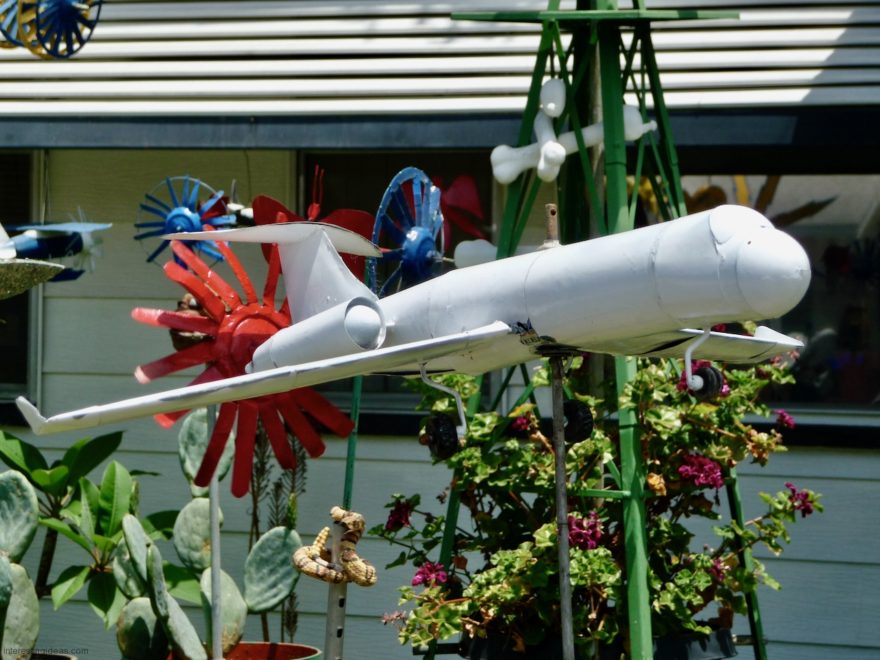
Wind power today usually means alternative energy, but there are those who harness it as a source of personal expression: The whirligig makers. Vollis Simpson ran a machine shop, did heavy equipment repair and was involved in moving houses. In retirement, he started tinkering with odd parts he had lying around. And he started making whirligigs. Big ones. His original whirligig park, in an out-of-the-way field in out-of-the-way Lucama, North Carolina, was the world’s most spectacular concentration of these wind machines. Simpson died in 2013, but the whirligigs were preserved and relocated to a dedicated park in nearby Wilson, where they
Continue reading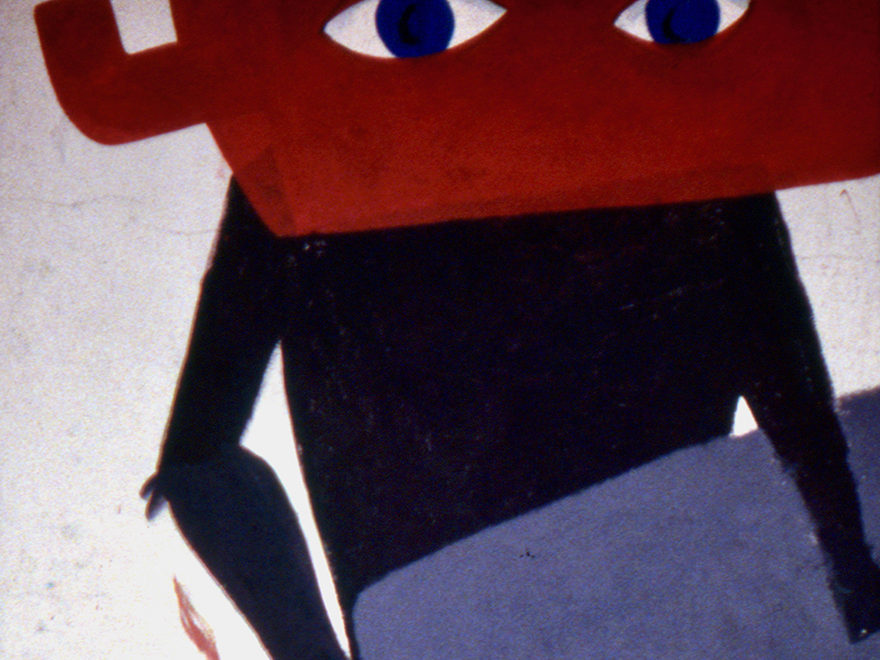
Sculpted muffler figures represent one of the great roadside folk arts, but 2D representations of exhaust pipes and related auto parts are often just as imaginative. The ominous figure from the former E&T Mufflers in Chicago is the greatest example of art on a shop sign I’ve even seen in the wild. Here’s that one again, another image from the same location, and a bunch of other delightful renderings from the underside. Back to Muffler People: The Last American Folk Art.
Continue readingBecoming Mary Sully: Toward an American Indian Abstract, by Philip J. Deloria. University of Washington Press, Seattle, 336 pages, 221 color illustrations, 2019. ISBN: 9780295745046, Paperback, $34.95. Mary Sully’s story is a saga of identity, from her signature artistic project — 134 iterations of what she called “personality prints” — to her name, which was actually Susan Deloria, to her ancestry, which gets complicated quickly. Indian and Anglo, it included tribal leaders and a military officer who slaughtered tribes. There is also a famous painter in her lineage and, not surprisingly, a lifelong struggle to find a place for herself.
Continue reading
Walks to the Paradise Garden: A Lowdown Southern Odyssey, by Jonathan Williams, photos by Roger Manley & Guy Mendes. Institute 193, Lexington Kentucky and New York, 352 pages, 100 color images and 80 black and white , 2019. ISBN: 978-1732848207. Hardcover, $45. It’s a shame this book wasn’t published as intended in the 1990s. Not only would its author have still been alive, but so would most of the artists he encountered on his travels across the back roads of the South. Inspired by William Least Heat-Moon’s Blue Highways, Jonathan Williams, poet, publisher and lover of the vernacular, undertook a series of
Continue reading
Rosehill is the largest cemetery in Chicago, and one of the most beautiful. In part it’s the setting, with its ponds and mature trees. But it’s also a function of the many wealthy people buried there. One thing rich people are good for is leaving behind beautiful mausoleums and monuments. At first glance they can seem to represent an excess of egotism, but over time they become objects of beauty that justify the original hubris. Rosehill Highlights(Hundreds more below) Founded in 1859, the site was supposed to be call Roe’s Hill after the farmer who sold the city the land.
Continue reading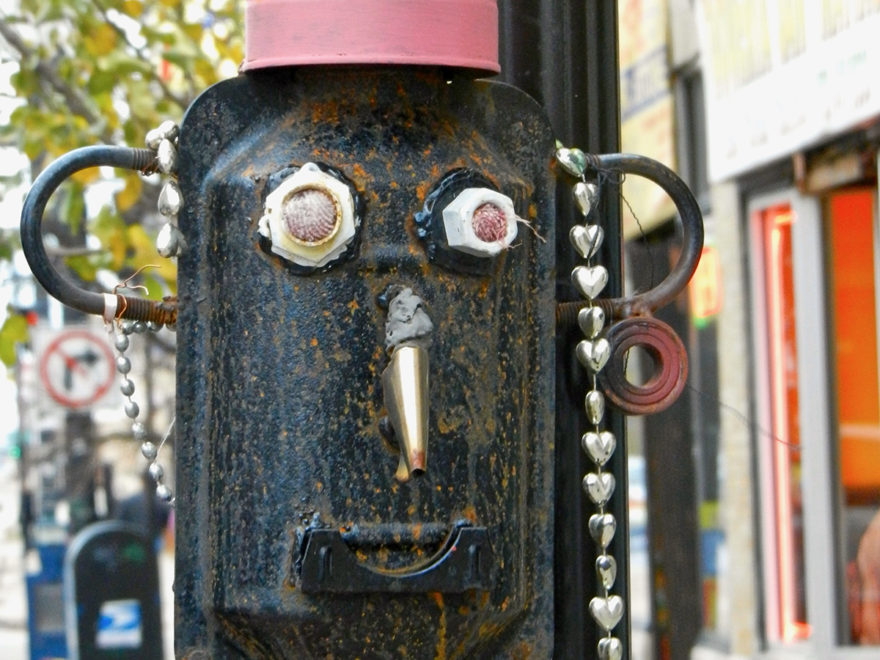
Calling muffler people “the last American folk art” may be a bit of an exaggeration, but not by much. If you accept a fairly rigorous definition of folk art, much of what is called folk — whether art, music, or craft — isn’t. That is, it’s not made by artists working from within a communal creative context, artists whose roots are in local or regional traditions more than in mass culture or eccentric visions. To say that Bob Dylan was never an actual folk singer or Howard Finster a folk artist does not diminish their talent or even their authenticity
Continue reading